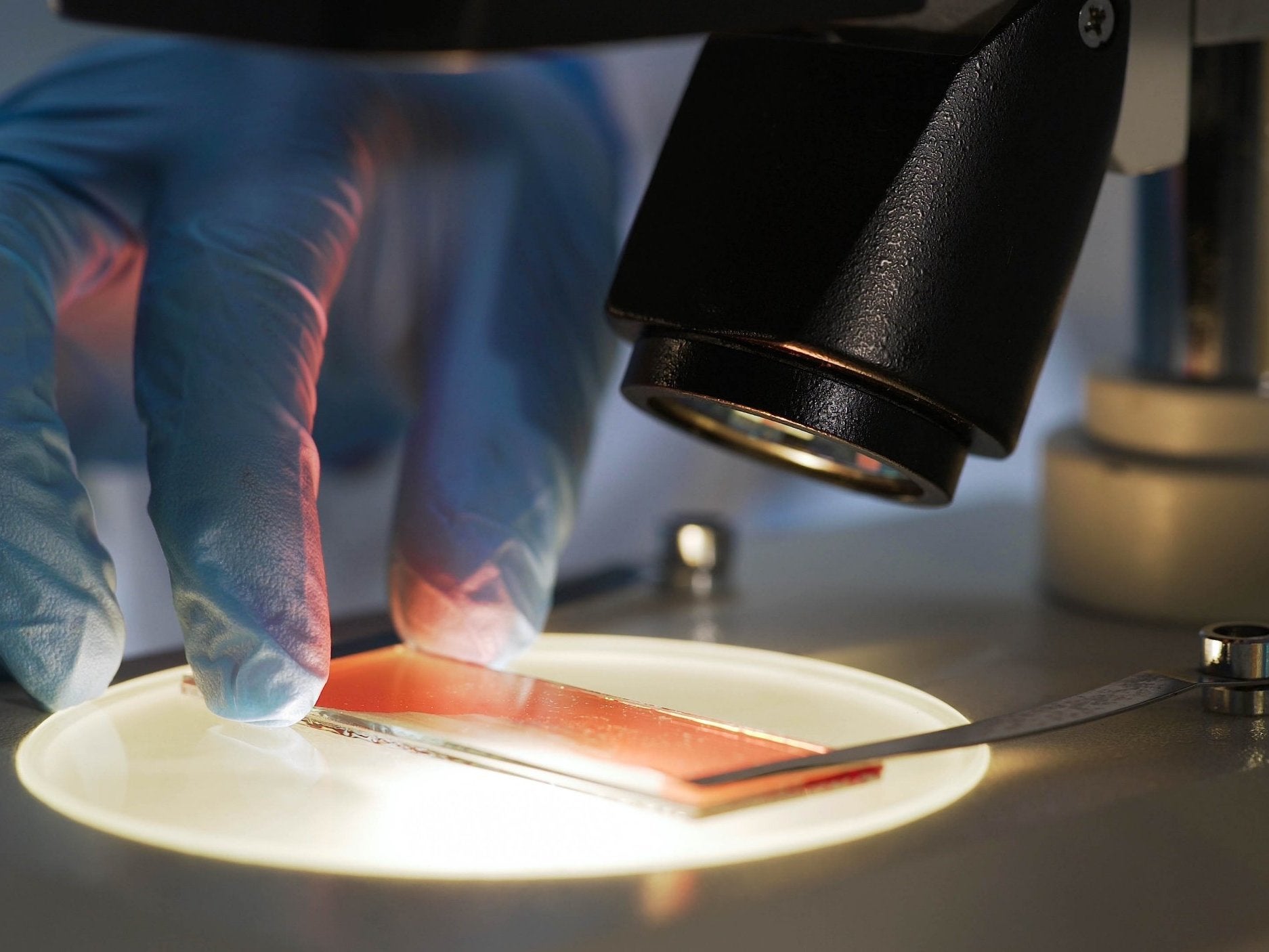Stopping the Bleed
"[It is nothing less than] a revolutionary therapy. The results so far are wonderful, in fact even better than what we had dared to hope."
"[Scientists have] a long way to go [in developing a therapy that can help more hemophilia patients.] We need to show that in large numbers, the results do hold up. We need to show that the results last for a long period of time, not necessarily last a lifetime."
Dr. Jerry Teitel, medical director, Hemophilia Treatment Centre, St. Michael's Hospital,Toronto
"It has probably affected every single part of my life, from being a kid to now. If you ever saw me as a kid, I was never in a group. I was always on the sides."
"I'm extremely happy in the sense of massive relief. I feel like I don't have to be as vigilant or worrisome about everything and anything that's going on around me."
"If the doctors wanted me to go down every weekend for more tests to accelerate anything I would say 'sure' because the improvement it gives anyone who has hemophilia is huge."
Bill Konduros, 59, machine shop owner, Mississauga, Ontario
 |
Those with the most severe form of the disease need regular shots of clotting factor VIII or factor IX Getty
|
Worldwide an estimated 185,000 people are absent the requisite proteins required to enable blood to clot.
The gene for blood clotting is on the X chromosome so that almost everyone with hemophilia is male, a genetic disease. The most severely affected among this aggregate group injects with the missing proteins, clotting factor VIII or factor IX every few days to make up for their critical deficit, but even with those injections, a risk of uncontrolled bleeding into a muscle or joint, or even the brain, may occur. As children, hemophiliacs are taught to avoid sports or any kind of physically jarring contact.
They become urban residents where access to treatment is assured. Insurance required for medical bills for hospitalization and surgeries, let alone the average cost of a year's clotting proteins averaging $250,000 to $300,000 translates to changing jobs as required for the needed insurance. The shots alone can rise to as much as $1-million annually. Even with the most acute, focused attention, people with severe hemophilia will develop permanent joint damage resulting from bleeds and most hemophiliacs live with constant pain.
In the 1980s the clotting proteins that were injected turned out to be contaminated with H.I.V. and hepatitis C, affecting everyone who received those shots.
Enter gene therapy. Where researchers hoping to discover a therapeutic miracle of sorts feel they're on track to rid patients of a dread condition forever hovering in the forefront of people's lives. The recent discovery of a gene therapy using a virus delivering a new gene to cells has a one-use time stamp -- it cannot be repeated -- should it work at first then for some unknown reason stop working as it did in two of a dozen patients in one trial.
Researchers are assiduously at work to build on the gene therapy to discover successful new treatments.
For gene therapy to be considered successful, it must result in reducing or eliminating the need for patients to receive injections, and above all, to reduce the incidence of bleeds. Depending on whether the patient has hemophilia A, caused by a mutation in the gene for factor VIII, or hemophilia B, caused by a mutation in the gene for clotting factor IX, indicates the type of gene to be inserted. Of the two types, hemophilia A is the most common and biotech companies are on track to get their therapies to market stage after final-phase clinical trials.
Scientists at University College London and St.Jude Children's Research Hospital in Memphis, Tennessee first reported positive results a few years ago, treating ten patients with hemophilia B, the process increasing blood levels of factor IX to two to six percent of normal. Scientists discovered that a man in Padua, Italy had a genetic mutation making cells turn out up to a dozen times the usual amounts of factor IX, realizing they could place the mutated gene into a virus, then insert it into the cells of hemophilia B patients.
Two Ontario brothers, Bill and Jay Konduros, (in their fifties) had hemophilia they were resigned to regarding as "a lifelong thing". They were part of Spark Therapeutics' clinical trial for hemophilia B. Half an hour of an intravenous drip resulted in factor IX levels in Bill's blood of around 50 percent and for Jay levels came closer to 75 percent. The full extent of the success of the therapy was revealed when Jay fell one day, with both wrists slamming hard on concrete, his left thigh badly hit, leading him to anticipate a disaster. Hours later when he examined himself, no bruises.
Three days later he thought it safe enough to call his brother to let him know what had happened, and that he now considered himself a normal individual who had experienced a minor fall with no ill results. "You hear a lot of things described as miracles or miraculous. I guess I would say this truly is", commented Bill.
 |
Levels of 30 per cent factor IX mean blood can clot Getty/iStock
|
Labels: Biogenetic Engineering, Disease, Health, Research, Treatment

0 Comments:
Post a Comment
<< Home